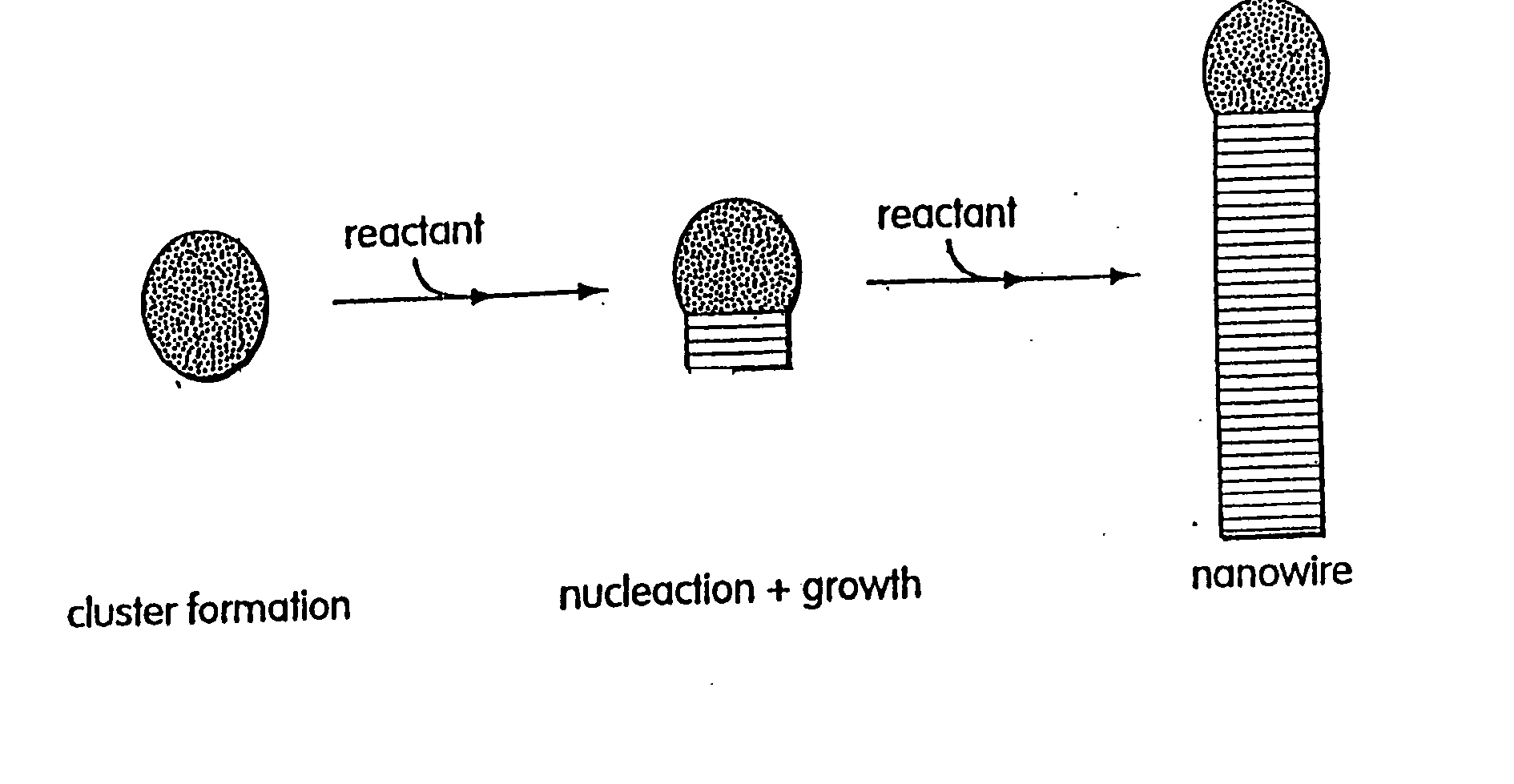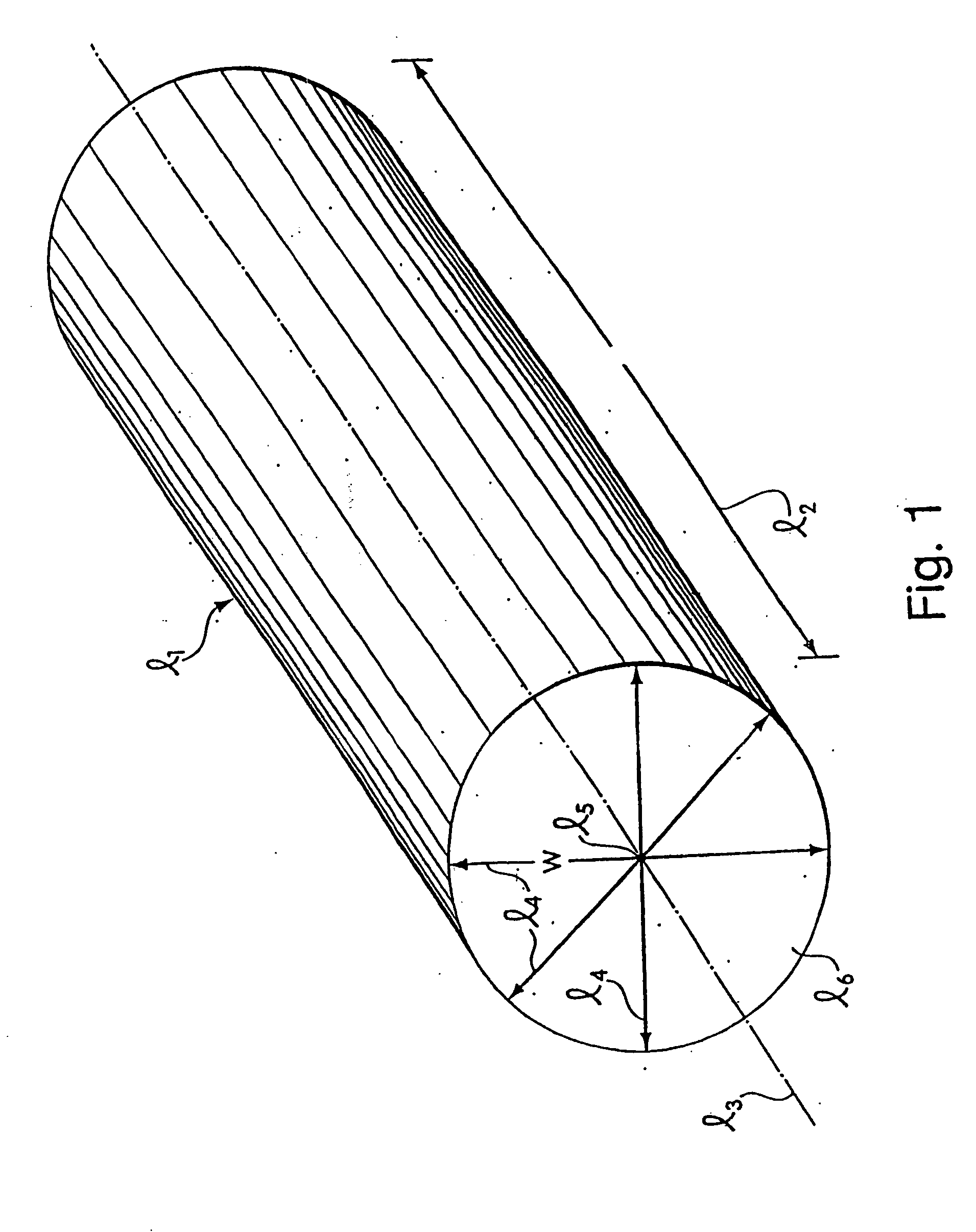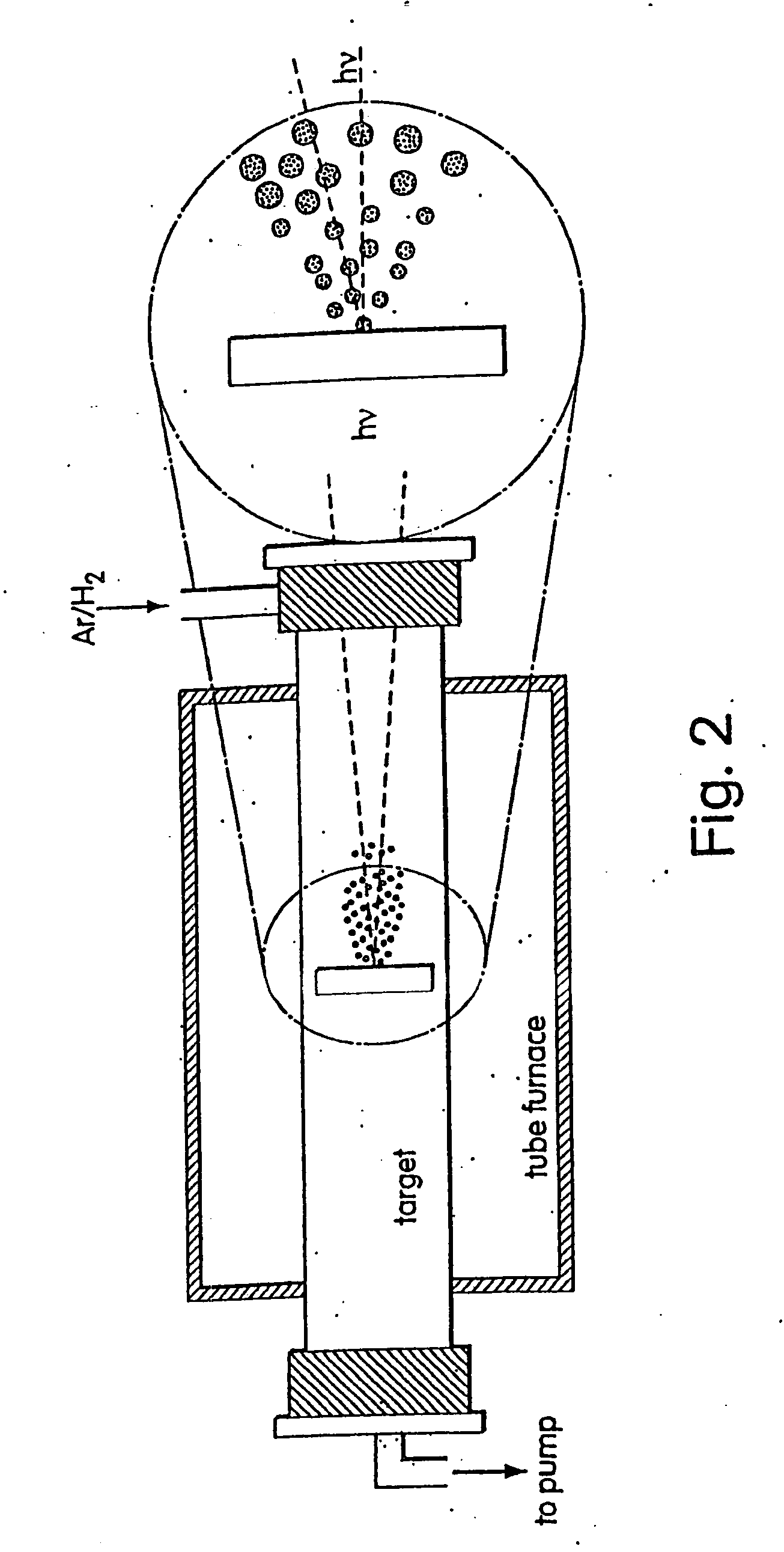Nanoscale wires and related devices
- Summary
- Abstract
- Description
- Claims
- Application Information
AI Technical Summary
Benefits of technology
Problems solved by technology
Method used
Image
Examples
example 1
[0313] Single crystal n-type and p-type silicon nanowires (SiNWs) were prepared and characterized by electrical transport measurements. As used herein, a “single crystal” item is an item that has covalent bonding, ionic bonding, or a combination thereof throughout the item. Such a single crystal item may include defects in the crystal, but is distinguished from an item that includes one or more crystals, not ionically or covalently bonded, but merely in close proximity to one another. Laser catalytic growth was used to introduce controllably either boron or phosphorous dopants during the vapor phase growth of SiNWs. Estimates of the carrier mobility made from gate-dependent transport measurements are consistent with diffusive transport. In addition, these studies show it is possible to heavily dope SiNWs and approach a metallic regime. Temperature-dependent measurements made on heavily doped SiNWs show no evidence for coulomb blockade at temperature down to 4.2 K, and thus testify t...
example 2
[0329] Nearly monodisperse samples of single crystalline GaP nanowires were synthesized with diameters of 10, 20, and 30 nm and lengths greater than 10 μm by exploiting well-defined gold colloids as catalysts in this laser catalytic growth (LCG) process. In this method, the Ga and P reactants generated by laser ablation of solid GaP are subsequently directed into a nanowire structure by gold nanocluster catalysts. Transmission electron microscopy (TEM) studies of nanowires prepared in this way demonstrate that the distributions of nanowire diameters are defined by those of the nanocluster catalysts. High-resolution TEM shows that the wires are single crystal zinc blend with a [111] growth direction, and energy dispersive X-ray analysis confirms that the nanowire composition is stoichiometric GaP. The use of monodisperse nanocluster catalysts combined with the LCG method enables the growth of a wide range of semiconductor nanoscale wires with well-defined and controlled diameters, an...
example 3
[0338] The synthesis of a broad range of multicomponent semiconductor nanoscale was accomplished using laser-assisted catalytic growth. Nanoscale wires of binary group III-V materials (GaAs, GaP, InAs and InP), ternary III-V materials (GaAs / P, InAs / P), binary II-VI compounds (ZnS, ZnSe, CdS, and CdSe) and binary SiGe alloys were prepared in bulk quantities as high purity (>90%) single crystals. The nanoscale wires have diameters varying from three to tens of nanometers, and lengths extending to tens of micrometers. The synthesis of this wide range of technologically important semiconductor nanoscale wires can be extended to many other materials.
[0339] The present technique involves the growth of elemental Si and Ge nanoscale wires using the LCG method, which uses laser ablation to generate nanometer diameter catalytic clusters that define the size and direct the growth of the crystalline nanoscale wires by a vapor-liquid-solid (VLS) mechanism. A key feature of the VLS growth proces...
PUM
 Login to View More
Login to View More Abstract
Description
Claims
Application Information
 Login to View More
Login to View More - R&D
- Intellectual Property
- Life Sciences
- Materials
- Tech Scout
- Unparalleled Data Quality
- Higher Quality Content
- 60% Fewer Hallucinations
Browse by: Latest US Patents, China's latest patents, Technical Efficacy Thesaurus, Application Domain, Technology Topic, Popular Technical Reports.
© 2025 PatSnap. All rights reserved.Legal|Privacy policy|Modern Slavery Act Transparency Statement|Sitemap|About US| Contact US: help@patsnap.com



